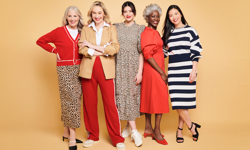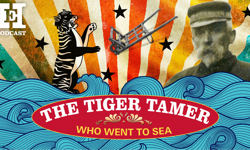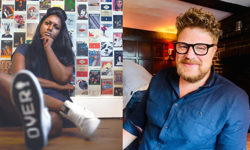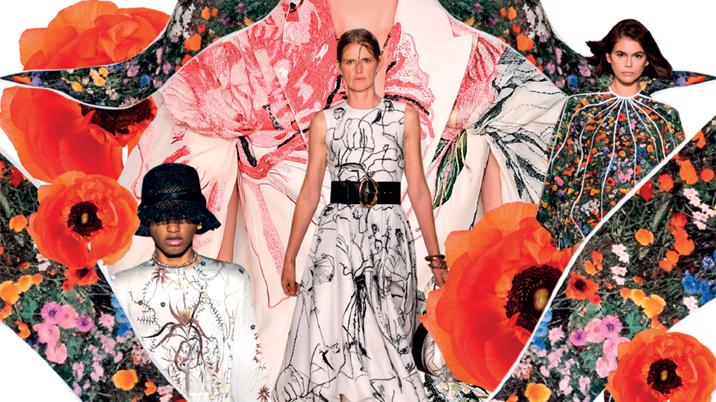
For decades, the fashion media has been dominated by the grand old dames of Vogue, Elle and Harpers Bazaar, but a disruptive brand is preparing to shake things up from an unassuming office in the heart of London’s Soho.
Buro 24/7 may be a newcomer to the UK fashion scene, but it has been making waves in emerging media landscapes since 2011 when it was founded by Russian influencer Miroslava Duma. She recognised a gap in the market for a digital magazine covering fashion, beauty, travel and culture, launching first in Russia and then in eleven other territories including Australia, Singapore, Malaysia and the Middle East, attracting advertising from luxury brands such as Hermès and Louis Vuitton. Duma has since left the company, which now has its headquarters in the UK, but is ultimately owned by Russia’s Forward Media Group.
By 2026, millennials are going to be the biggest consumers of luxury.
Targeting millennials
I meet Buro Global’s CEO Nick Smith, former prestige and lifestyle director at News Corp Australia, where he oversaw brands including GQ Australia, Vogue Australia and Vogue Living, in the final few weeks before the launch of the new website, which is targeting English speakers in London and beyond. He tells me that Buro 24/7 hopes to attract a new breed of ‘affluent millennials’.
“We’ve seen over the last couple of years the rebirth of brands, from Louis Vuitton to Burberry, Balenciaga, Gucci. The digital plus, younger luxury audience has become more important to them. By 2026, millennials are going to be the biggest consumers of luxury, not just in terms of fashion and beauty, but experience, travel, you name it,” he says.
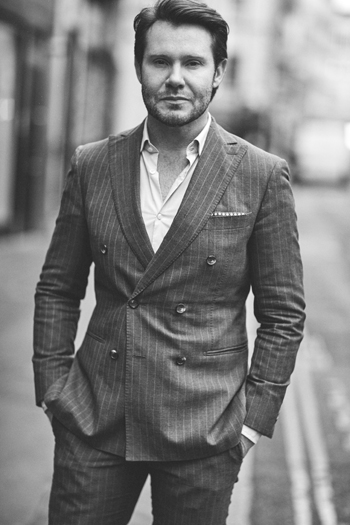
Because it started out as a digital brand, rather than as an add-on to an established print empire, Smith believes Buro 24/7 is well placed to meet its target market ‘squarely on the head’ by tapping into an online conversation which brands such as Gucci have already started with 18 to 34-year-olds.
“It operates more like the luxury brands, which is a little bit more playful, more personality. The thing that has really kick-started the luxury market is that digital dialogue, whether it’s on social media, new platforms or websites,” says Smith.
On the way to our interview, I sat next to two young men on the train who were coming into the capital for an exclusive trainer ‘drop’. Smith says this is exactly the kind of experience Buro is tapping into.
“What I’m seeing is that hype mentality that’s come into the luxury market, brands have got people queuing up for their T-shirts and that limited-edition notion of the luxury drop, Buro very much speaks to that,” he says.
When I mention the word ‘disruptive’ he replies: “I see ourselves as bold. People say, why are you launching in the UK market which is probably one of the most competitive and hard to break into? The good thing with Buro is we’re a tested success case, with roots in Moscow, the Middle East, Singapore and Malaysia. Our growth has come from some of those smaller markets, where we’ve had to do things differently to break into the crowd.”
He believes the entire industry has had to change to meet the demands of a younger digital audience, who are not just interested in how much something costs, but also the quality of the experience.
“Our founder understood the currency of social media. Her success in the social world expanded into a website which covered not just fashion and beauty but very keenly talked to travel, experience and personal success.”
He adds: “We’ve rebranded ‘millennials’ in the office to call them ‘luxury inventors’. You have to talk in their language and have this accessibility to something that’s going to change their life. They’re the ones who have led to this notion of luxury being disruptive, because the entire industry has turned on its head to cater to them.”
We’re not just using social media as a referral tool, we’re using it as a storytelling medium.
Launch preparations
To this end, he has assembled a small, but talented team, including former Vogue.co.uk editor Lucy Hutchings as managing editor, Natalie Hartley who previously worked at Glamour UK as fashion director, ex-Elle UK beauty director Sophie Beresiner as beauty editor and Reena Prashar who spent seven years at online fashion retailer ASOS.com as global digital director.
“I made a very considered choice to have a team that was a mix of digital savants and people with experience which brings the relationships in these markets,” he says.
Before the launch of its website, Buro 24/7 has started seeding its brand via social media, using Insta-stories such as the beauty editor attending the launch of Victoria Beckham’s cosmetics range.
“Our proposition is, we are an invitation into this world, delivering you the inaccessible; you’ll see our beauty editor going into a particular event such as the Victoria Beckham make-up launch and you’re actually there with her. You have to be prepared to take your content to the consumer, on the channel where they are, at the right time of day. We’re not just using social media as a referral tool, we’re using it as a storytelling medium,” says Smith.
The brand’s key performance indicator is engagement, which means really serving the luxury brands who are its clients by persuading consumers to follow through by clicking on editorial to buy and book.
“We realise a great piece of journalism can get someone to think or feel or have an opinion on something, but if it’s a shopping story, we want them to be able to buy, if it’s a travel story we want them to be able to book, really close that path to purchase for our advertisers. I’ve been closely working with the editorial team to make sure we are delivering on that. It’s a retraining for some journalists to realise it’s not just about what I say, it’s the next step of what am I getting my consumers who are reading this piece of content to do.”
He believes Buro 24/7 differs from traditional fashion media brands, both in its broader remit and also in its technical and design proposition. The company has created its own CMS system which allows for rapid turnaround of stories.
“Today, the currency for consumers is speed. The boring part behind a platform is how fast it loads, can it hold big video, can you display interactive GIFs or do something special with photography, so that’s all there. In terms of our design proposition, it’s bolder, it’s cleaner. We’ve also brought in elements of playfulness, so rather than having to click through to a site, if you click on a certain part of the homepage, you get an unveil of a story, a quiz or a fashion shoot. It triggers engagement and a more positive emotion,” explains Smith. The beta site he shows me is certainly bold and eye-catching, using colours such as hot pink and bright yellow.
Having a mobile-friendly platform is also vital as 70 per cent or more of the audience will be reading on their phones. Having tackled the CMS, the next stage is to think about notifications and how Buro 24/7 can be up there with the news brands people read when they turn on their phones first thing in the morning.
We’re not beholden to the data, but we’re informed by it.
Using data
Data is also important, although Smith is careful to point out: “I would prefer to say we’re not beholden to the data, but we’re informed by it.” At its daily ‘stand-ups’, the team keeps a close eye on what terms people are searching for. So, for example, when the term ‘right-hand rings’ started trending, they commissioned a long-form piece on the subject.
“That is a fantastic story. It’s not just about the product or the data but saying, why are people searching for right-hand rings at that time of the year. I may have wanted to be in a relationship by now, or I may have wanted to be engaged, but I’m not, so I’m empowering myself with an investment piece. That speaks to so many things in terms of the luxury industry and the state of mind of that audience. It’s a long read written by a fantastic journalist with humour and wit and off the back of that we can add our ‘10 best right-hand rings’ piece from our fashion editor,” says Smith. Watches and jewellery are a key area for the brand, as Smith feels this section of the luxury market is currently underserved, particularly when it comes to female consumers.
He is frank that the main measurement of success will be revenue, as well as establishing a solid, engaged audience. He hopes for between 400,000 and 600,000 readers in the first year who will spend time on the site and appeal to their luxury clients. In some of its existing territories such as China, Mexico, Mongolia and most recently Serbia, he believes Buro already acts as a ‘cultural attaché’ for luxury brands keen to break into these markets.
Another thing that Buro has been successful at is expanding into physical outlets including beauty salons and a restaurant in Moscow and a beach club in Singapore. In the UK, he says, “this is a tough market to set up a café or a restaurant, so we don’t propose that we would go down that route. Where we would probably go to is where we have a really engaged audience, that’s why data and understanding our consumer is so key. Either a masterclass, paid-for video series on success, or it could be we do go into our business in beauty here if that seemed to be something our audience resonated with.”
He adds: “It goes back to that point that the consumer is now so much more in control. You have to be ready to meet them where they are, on the channel, at the time and how they want to consume their content. The nice thing with Buro is, we don’t have the legacy of a printed product. What we want to deliver in this market is a great digital experience for our audience.”
The nice thing with Buro is, we don’t have the legacy of a printed product.
This article was first published in InPublishing magazine. If you would like to be added to the free mailing list, please register here.



